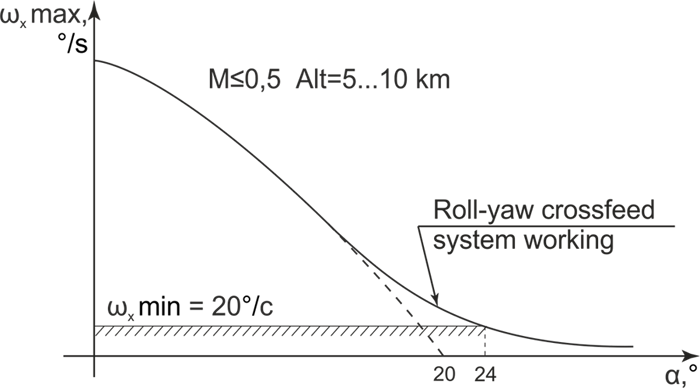The Su-27 (NATO codename Flanker B) is a highly-agile, supersonic, twin-engine air-superiority fighter. A mainstay of modern Russian combat aviation, the Su-27’s primary role is as a long-range interceptor, but it is also a superb dogfighter. The Flanker B can carry up to twelve air-to-air missiles - usually a mix of short range R-73s (AA-11 Archer) all-aspect IR and medium-to-long range R-27s (AA-10 Alamo). It also has a fearsome 30 mm GSh-30-1 cannon and can deliver unguided bombs, CBUs and rockets in the ground attack role.
Equipped with a powerful (‘Slot Back’, Russian ‘Mech’ or ‘Sword’) pulse doppler radar for optimum lookdown-shootdown capability, the Su-27 also has cutting-edge Infrared Search and Track (IRST) for the passive detection and engagement of aerial targets.
Powered by 2 × Saturn AL-31F turbofans each producing 16,910 lbf of dry thrust and 27,560 lbf with afterburner, the Flanker B has a maximum speed of 2,500 km/h (1,550 mph or Mach 2.35) at altitude and 1,400 km/h (870 mph or Mach 1.13) at sea level and a searing 59,000 ft/min rate of climb. The aircraft has a service ceiling of 62,500 ft and an exceptional range of 3,530 km (2,193 mi; 1,906 nmi) at altitude and 1,340 km (800 mi; 720 nmi) at sea level.
Fast, agile and superbly equipped, the Su-27's ability to maneuver at very slow speed and with a high angle-of-attack make it a dangerous opponent in air combat. Take on the DCS: F-15C Eagle - and see who comes out on top. The J-11A aircraft featured in the game is a Chinese variant of the Russian Su-27 with minor radar modifications and the ability to use R-77 active air-to-air missiles.
Directional yaw control is performed by symmetrical deflection of the rudders. Transmission of inputs from pedals to the rudders is conducted by means of a mechanical linkage. Additionally, yaw sub-channel servo units of the fly-by-wire system are mechanically connected to the rudders with half-travel authority.

Directional channel rudder control schematic block diagram
The yaw sub-channel of the fly-by-wire system includes the following automatic devices:
Roll-Yaw crossfeed system operates in accordance with side stick inputs. It deflects the rudders to the same side as the control stick. This eliminates adverse sideslip caused by the difference in drag by half-wings. It also improves a lateral controllability, especially at high angles of attack.

Rudder – AoA diagram
Due to this, lateral control is preserved up to an angle of attack of 28 degrees and there is no roll reversal due to control stick movement.

Roll rate – AoA diagram
Yaw stability system operates in accordance with lateral acceleration inputs and it provides required characteristics for aircraft yaw stability due to the aircraft having relaxed statistic yaw stability. This is due to the peculiar properties of the Su-27’s aerodynamic configuration aft of the center of gravity, elongated lateral wing area of the fuselage, and forward fin displacement. The operating principle of the Su-27’s yaw stability system is similar to that of the pitch stability augmentation system.
Yaw damper provides the required characteristics needed for lateral dynamic stability.
In order to decrease loads on the fins and the aft fuselage as a whole at the speeds of over 600 km/h, and when the landing gear is up, a spring mechanism is connected to the directional control system providing for the locking stop in the mid-travel of the pedals to each side. It is forbidden to override the locking stop of the pedals at the airspeeds over 600 km/h. This is why pedal travel at these speeds is reduced by half in this simulation.
The powerplant of the Su-27 includes two АЛ-31Ф (AL-31F) engines, each of which has its own turbine starter ГТДЭ-117 (GTDE-117). Because both engine have a separate starter, both individual and simultaneous starting of both engines is possible.
In order to start the engines on the ground, one should:
After this, the engine starter doors will open, the door limit switch actuates and puts the starter circuit into operation. Based on the starter circuit command, fuel is provided to the turbine starter and the annunciator "ЗАПУСК" (START) is lit in the cockpit.
The starter circuit turns on the electrical starter motor, ignites the turbine starter, and supplies oxygen to the turbine starter. After ten seconds, the turbine starter will turn off these accessories and simultaneously turns on ignition of the main chamber. The turbine starter spins up the engine rotor and the fuel control unit controls fuel flow to the main chamber. After ignition in the main chamber, the turbine comes into operation and accelerates the engine rotor together with the turbine starter. At 35% of the engine RPM, the ignition exciter in the main chamber switches off. At 53% of the engine RPM, or after 50 seconds, the turbine starter and starter circuit are switched off, which is indicated by the annunciator "ЗАПУСК" (START) turning off. The engine then reaches IDLE mode automatically.
The nozzle control system is intended to change the diameter of the exhaust nozzle in accordance with the desired law.
Before engine start, during the ignition and when in IDLE mode, the nozzles are completely open to provide the most favorable conditions for engine start: the greatest torque of the turbine, minimum overheating, and the minimum thrust during IDLE mode. When the throttle is moved forward to 77-81% of the engine RPM, the nozzles close partially in order to produce improved thrust characteristics. When the afterburner is switched on, the nozzles opens in order to maintain the turbine exhaust temperature. As the thrust augmentation ratio increases, the nozzles open.
When the landing gear is extended, the nozzles partially closed in order to preserve the power margin and to avoid nozzle contact with the runway during the touchdown. Due to this, the thrust is increased when on the glide path. In order to decelerate, the speedbrake should be used.








